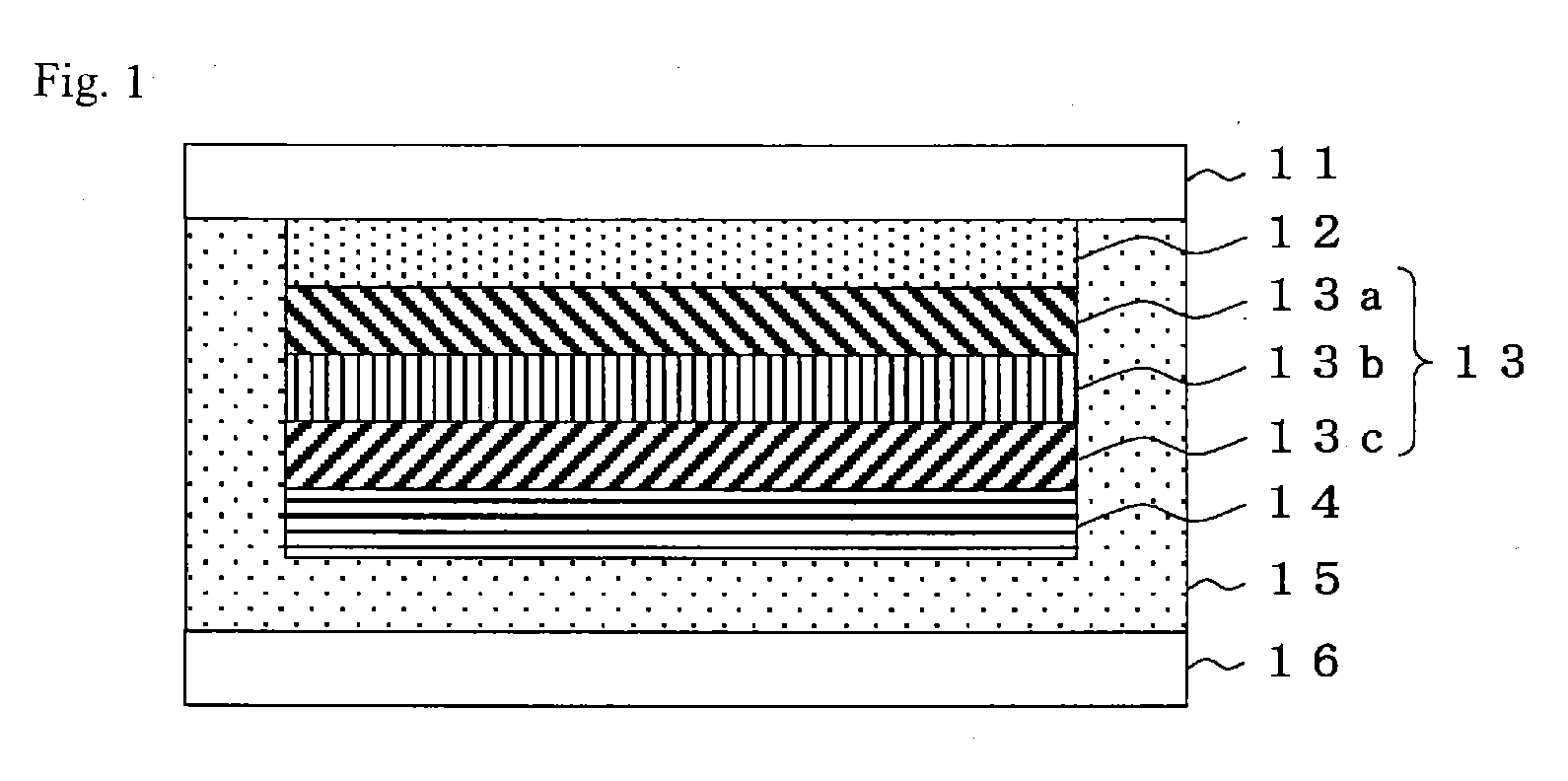Encapsulant for solar cell and interlayer film for laminated glass
a solar cell and interlayer film technology, applied in the direction of synthetic resin layered products, bandages, transportation and packaging, etc., can solve the problems of acetic acid produced by hydrolysis or thermal decomposition of eva, affecting the service life of solar cell modules, and difficult control of the embedding process of solar cells and curing process of solar cell modules using curable casting resin, etc., to achieve the effect of reducing cost, reducing corrosion of metal components, and increasing service li
- Summary
- Abstract
- Description
- Claims
- Application Information
AI Technical Summary
Benefits of technology
Problems solved by technology
Method used
Image
Examples
preparation example 1
[0086]A 2 m3 reaction vessel equipped with a stirrer was charged with 1,700 kg of a 7.5% by mass aqueous solution of PVA (1,000 in average degree of polymerization and 99% by mole in degree of saponification), 74.6 kg of butyl aldehyde, and 0.13 kg of 2,6-di-tert-butyl-4-methylphenol, and the whole of the mixture was cooled to 14° C. Butyralization of the PVA was started by adding 160.1 L of a 20% by mass nitric acid aqueous solution to the mixture. Ten minutes after the addition, heating was started. The temperature was raised to 65° C. over 90 minutes, and the reaction was further allowed to proceed for 120 minutes. Subsequently, PVB was precipitated by cooling the product to room temperature, filtered, and washed ten times with ion-exchanged water in an amount ten times that of the PVB. Subsequently, the PVB was sufficiently neutralized with a 0.3% by mass sodium hydroxide aqueous solution, and washed ten times with ion-exchanged water in an amount ten times that of the PVB. The ...
preparation example 2
[0087]PVB (PVB-2) was obtained as in Preparation Example 1, except that 20% by mass hydrochloric acid was added instead of the nitric acid aqueous solution for the butyralization of PVA. Table 1 shows the results of the analysis of the obtained PVB.
preparation example 3
[0088]A 2 m3 reaction vessel equipped with a stirrer was charged with 1,700 kg of a 7.5% by mass aqueous solution of PVA (1,000 in average degree of polymerization and 99% by mole in degree of saponification), 74.6 kg of butyl aldehyde, and 0.13 kg of 2,6-di-tert-butyl-4-methylphenol, and the whole of the mixture was cooled to 14° C. Butyralization of the PVA was started by adding 160.1 L of 20% by mass hydrochloric acid to the mixture. Ten minutes after the addition, heating was started. The temperature was raised to 65° C. over 90 minutes, and the reaction was further allowed to proceed for 120 minutes. Subsequently, PVB was precipitated by cooling the product to room temperature, filtered, and washed 15 times with ion-exchanged water in an amount ten times that of the PVB. Subsequently, the PVB was sufficiently neutralized with a 0.3% by mass sodium hydroxide aqueous solution, and washed 15 times with ion-exchanged water in an amount ten times that of the PVB. The PVB (PVB-3) was...
PUM
| Property | Measurement | Unit |
|---|---|---|
| Temperature | aaaaa | aaaaa |
| Fraction | aaaaa | aaaaa |
| Time | aaaaa | aaaaa |
Abstract
Description
Claims
Application Information
 Login to View More
Login to View More - R&D
- Intellectual Property
- Life Sciences
- Materials
- Tech Scout
- Unparalleled Data Quality
- Higher Quality Content
- 60% Fewer Hallucinations
Browse by: Latest US Patents, China's latest patents, Technical Efficacy Thesaurus, Application Domain, Technology Topic, Popular Technical Reports.
© 2025 PatSnap. All rights reserved.Legal|Privacy policy|Modern Slavery Act Transparency Statement|Sitemap|About US| Contact US: help@patsnap.com

